After coal was first discovered in Hillcrest in 1898, a prosperous decade and a half began. Workers flooded to Hillcrest, and by 1914 the town had a population of around 1000, many of whom were recent immigrants. The town grew, and the mine was not only prosperous, but was considered one of the region’s safest. If you’ve heard of the Hillcrest Mine though, you’ll know that this story doesn’t have a happy ending. On June 19, 1914, a pocket of methane exploded, igniting a coal dust explosion that left 130 women widowed and 400 children fatherless. The death toll of 189 made the Hillcrest Mine Disaster the worst in Canadian history.
Today the former mine lies forgotten, like many other boomtowns and their mines in the Crowsnest Pass. A few scattered buildings and debris sit quietly, slowly being swallowed up by the forest. The site is disturbed only by wildlife and the occasional hiker.
From the old road to the mine a trail breaks away, switchbacking down to the bottom of a canyon and to Drum Creek. Starting up near Hearts Peak, Drum Creek makes its way past the former mine site in an endless series of cascades, eventually meeting up with the Crowsnest River. Two beautiful waterfalls are accessible from this trail, and it’s one of my favourites in the area. Both the history buff and the nature buff in me find something about to love about this short hike.
Continue reading this blog post for everything you need to know to experience the Drum Creek Falls hike in the Crowsnest Pass for yourself, including distance, elevation gain, how to get there, the best time to visit, and lots of photos of my experience.

When hiking it’s important to avoid harmful practices such as disturbing plants or rock-stacking, or removing any natural object from flowers to rocks, as it’s important to leave the environment as natural as possible for the animals and for fellow hikers to enjoy in perpetuity. As many flowers as there are, there are few enough that if we all took one, then there wouldn’t be any left. Take only photos, leave only footprints.
If you haven’t heard of Leave No Trace principles, they’re also really essential to read up on before heading anywhere into the outdoors in general. Following these important principles basically means doing your best to leave beautiful places like Drum Creek Falls as good (if not better) than you found them, both for their preservation and for the enjoyment of other visitors.
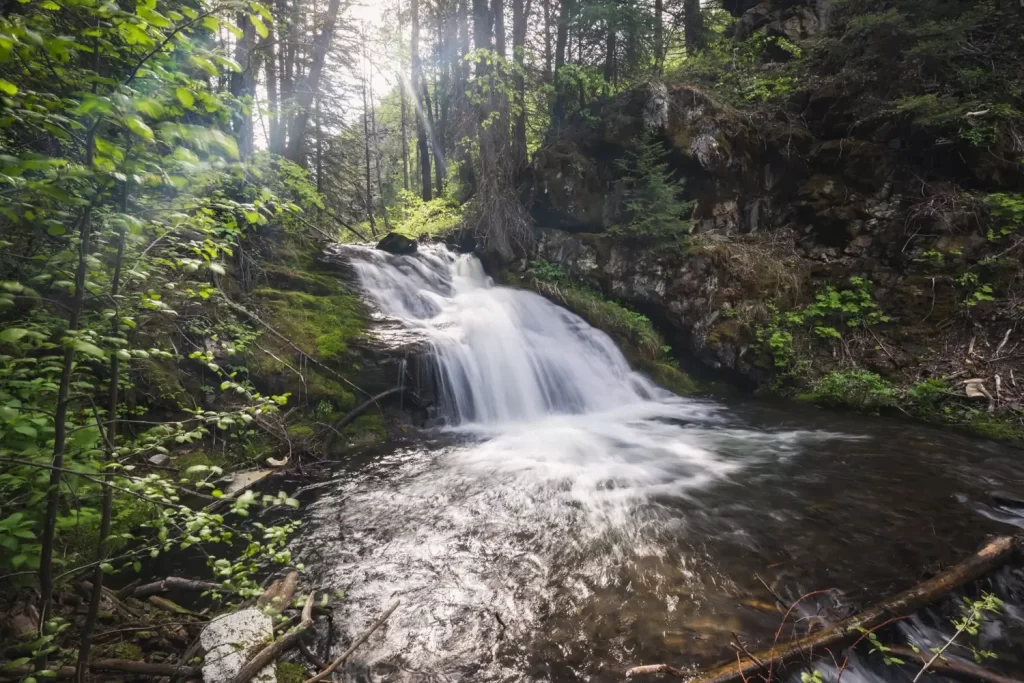
Drum Creek Falls Round Trip Details
Distance: 2.6 KM / 1.6 MI
Elevation Gain: 93 M / 305 FT
Hiking Time: 1.5 HRS
Hiking & Safety Tips
- Prepare for the possibility of wildlife encounters. Bear spray is a must whenever travelling in bear country, as well as learning how to use it. Though your chance of an aggressive bear encounter is low, it is always better to be prepared with bear spray. Bear bells are proven to be an ineffective bear deterrent, and are actively discouraged by Parks Canada. The best way to let bears know you’re around is simply to use your voice. Make sure to keep a respectful distance from wildlife and never feed the animals. It may seem kind but it doesn’t just kill wildlife and put people in danger, it’s also in many cases illegal.
- Research current trail conditions and make sure you are well-informed about the route before you leave, and assess if it is within your capability. Be aware of what time it gets dark and check the weather forecast. Make sure to tell someone where you’re going and when you expect to return. Every year as more and more people try hiking for the first time, the number of rescues goes up. Being prepared is the best defense.
- Pack everything you need for a successful hike, including enough water and energy-rich snacks. Remember to pack out everything you pack in though – don’t expect to find a convenient garbage can halfway up the trail. Bring appropriate layers (remember you’ll warm up once you start hiking) and sun protection. Hiking poles may be helpful but are not required. In addition to not leaving any garbage on the trail yourself, I highly recommend bringing a garbage bag and collecting any trash that you do see on the trail. You’re guaranteed to make the hike to Drum Creek Falls a more enjoyable experience for the next person.
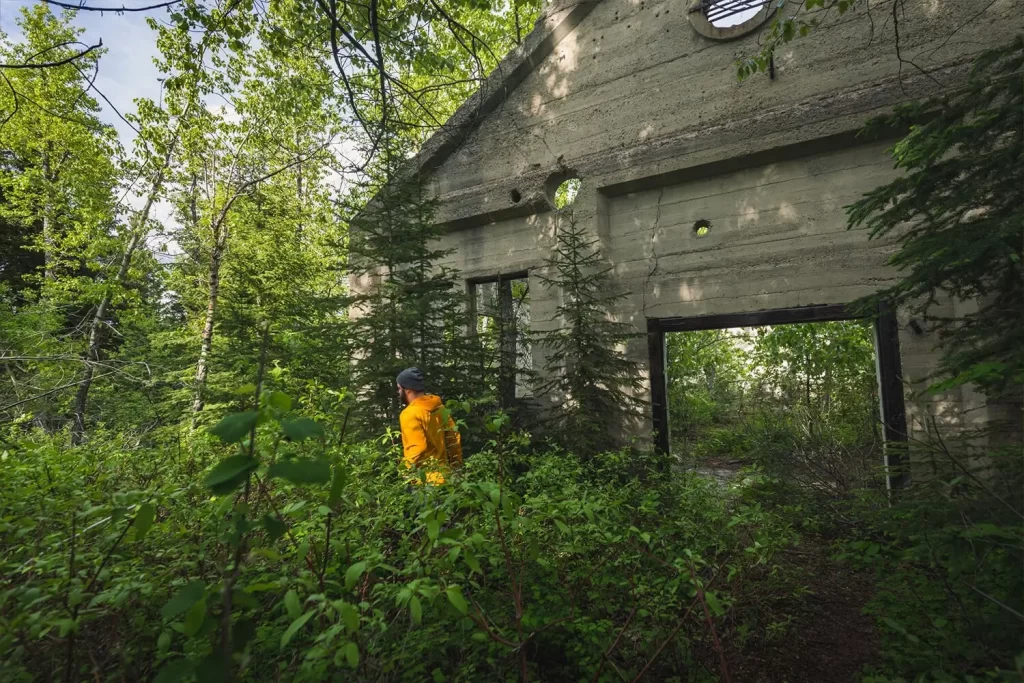
When to Visit Drum Creek Falls
Like many waterfalls in the Rockies, the best time of year to visit is in late Spring. Melting snow and recent rainfall mean that the water level is at its highest, and the waterfalls at their most dramatic. Later in the year waterfalls lose a lot of their power, with some drying up to not much more of a trickle. Drum Creek Falls never fully dries up and to the best of my knowledge flows decently year round, but if visiting in late summer or autumn either try and time your visit with recent rainfall or lower your expectations accordingly.
How to Get to Drum Creek Falls Trailhead
The walk to Drum Creek Falls starts along the old mine road in Hillcrest, just off of the Crowsnest Highway. now located just next to 61 230 Street in a residential neighbourhood. There is no official parking lot so I suggest finding somewhere along the street to park. The trailhead is an hour and a half from Lethbridge or two hours fifteen minutes from Calgary.
Click here to open the exact trailhead location in Google Maps.
Hiking to Drum Creek Falls
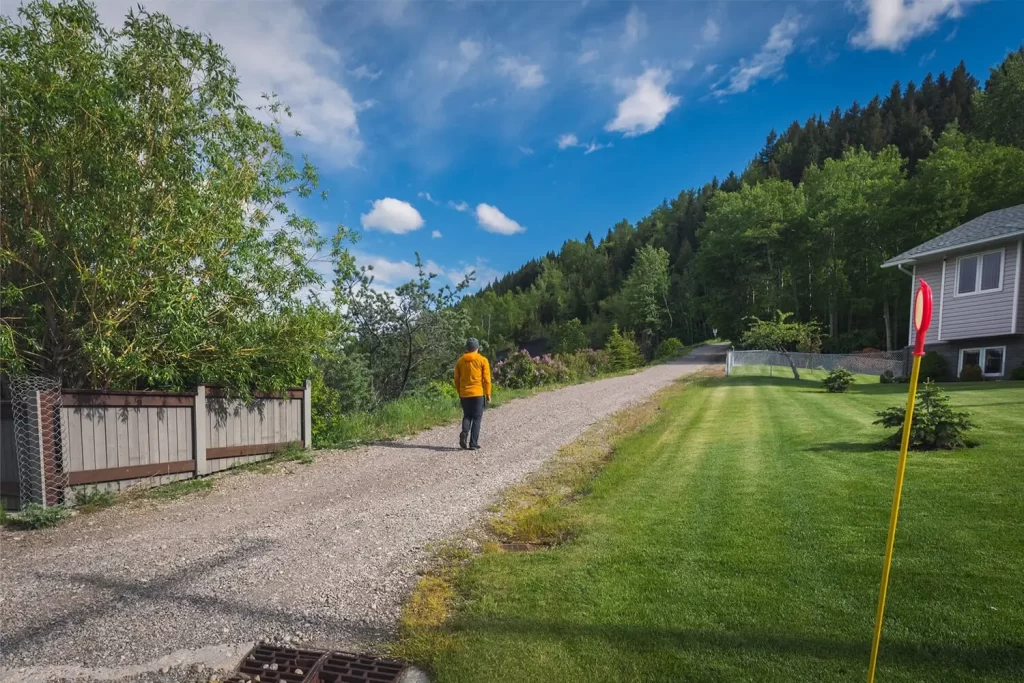
The old mine road starts innocuously in a residential neighbourhood.
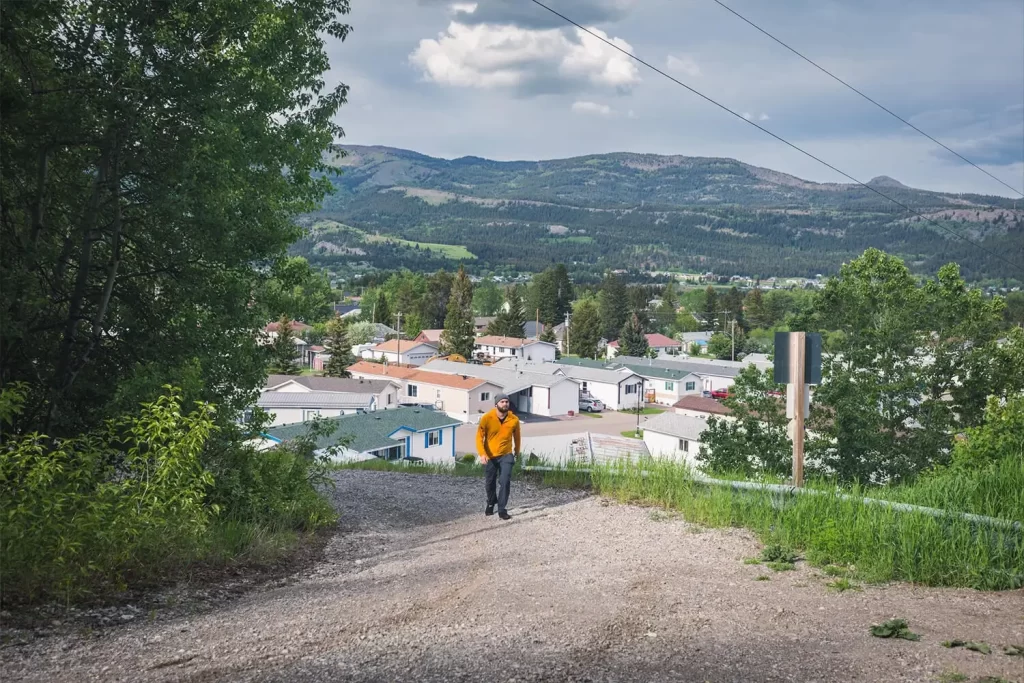
Heading up the road with residential Hillcrest behind me.
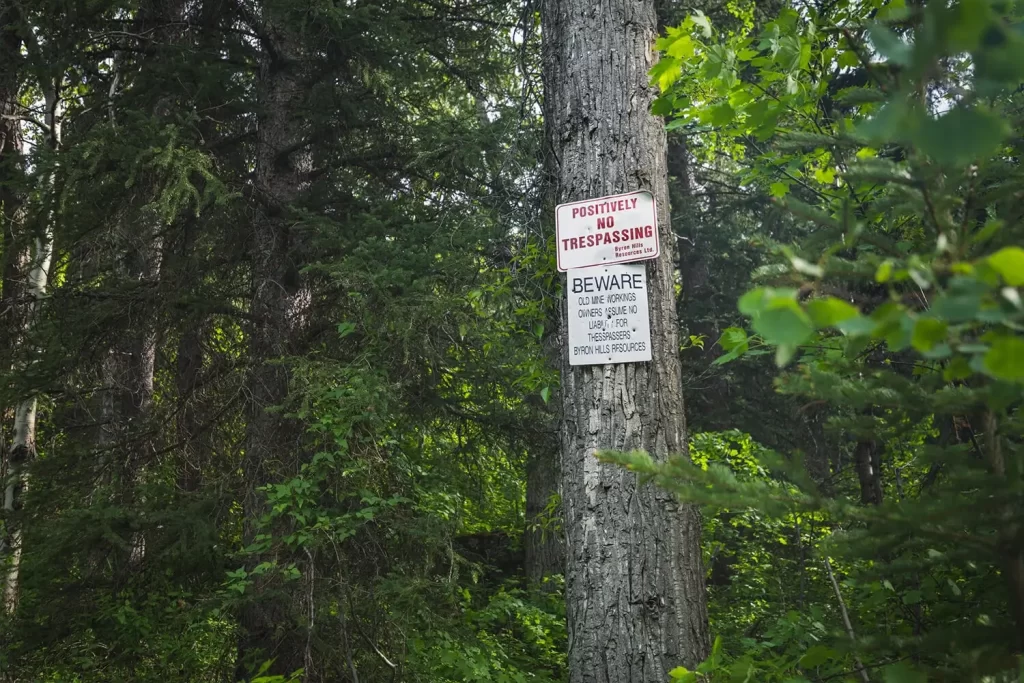
Plenty of no trespassing signs. My understanding is that the landowners have no actual problem with people using the route – it’s purely about avoiding liability.
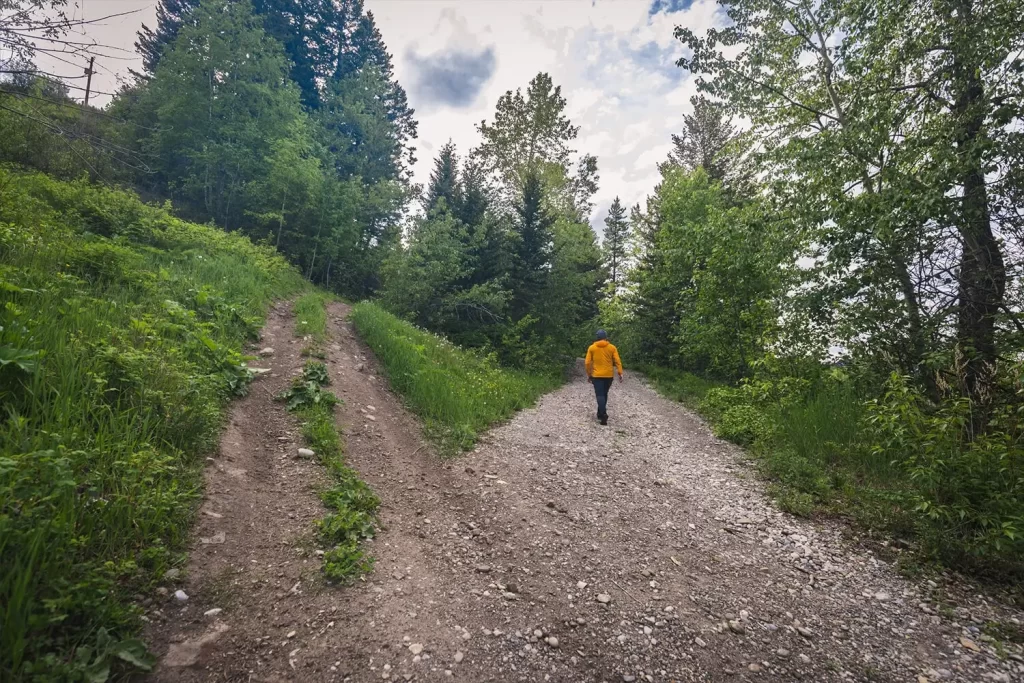
It’s possible to go left or right here. Both ways reconnect shortly. The left route is used by atvers to avoid a gate – evidence that the trail is well used by locals.
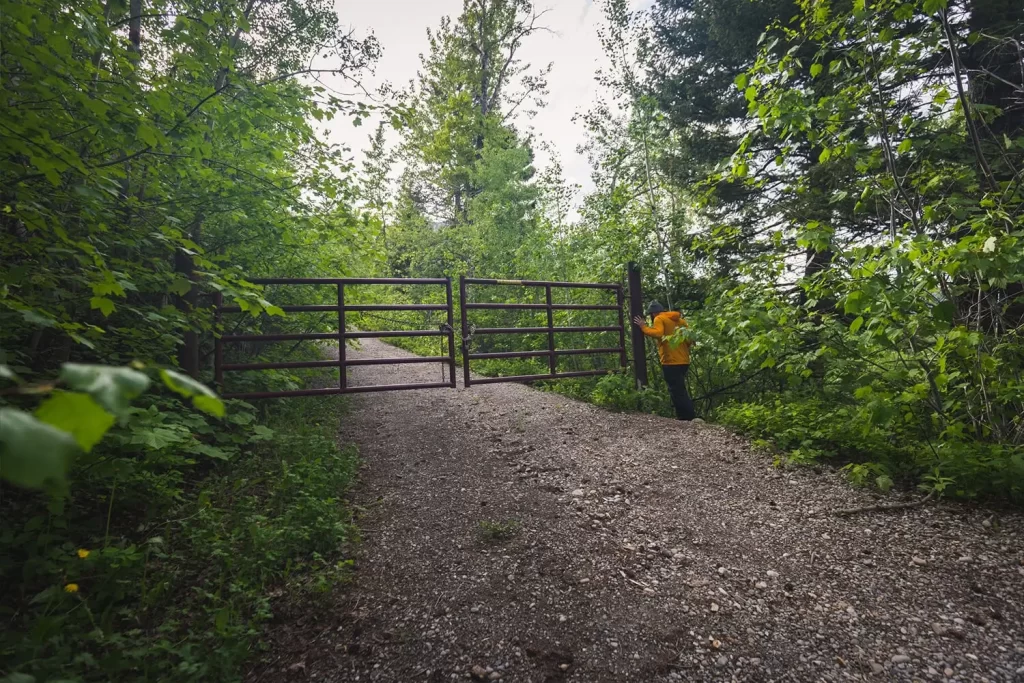
Having chosen the right route the trail goes around a gate.
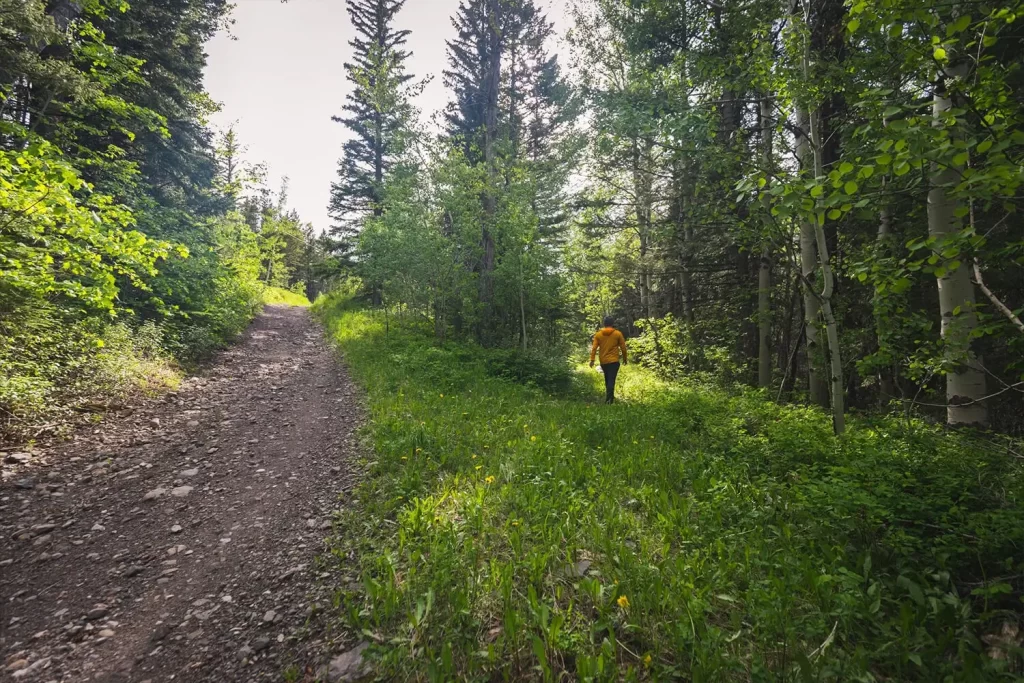
A not-very-obvious turn-off at the base of a hill leads to the ruins. I missed this turn-off at first and had to backtrack. If you continue along the old road and the ruins become visible on your right, you’ve missed the turn.

The mine ruins. It’s possible to either walk straight through them and out the other side, or to follow alongside the outer wall without entering. Both paths reconnect on the other side of the building, turning sharply right and down to the gully.
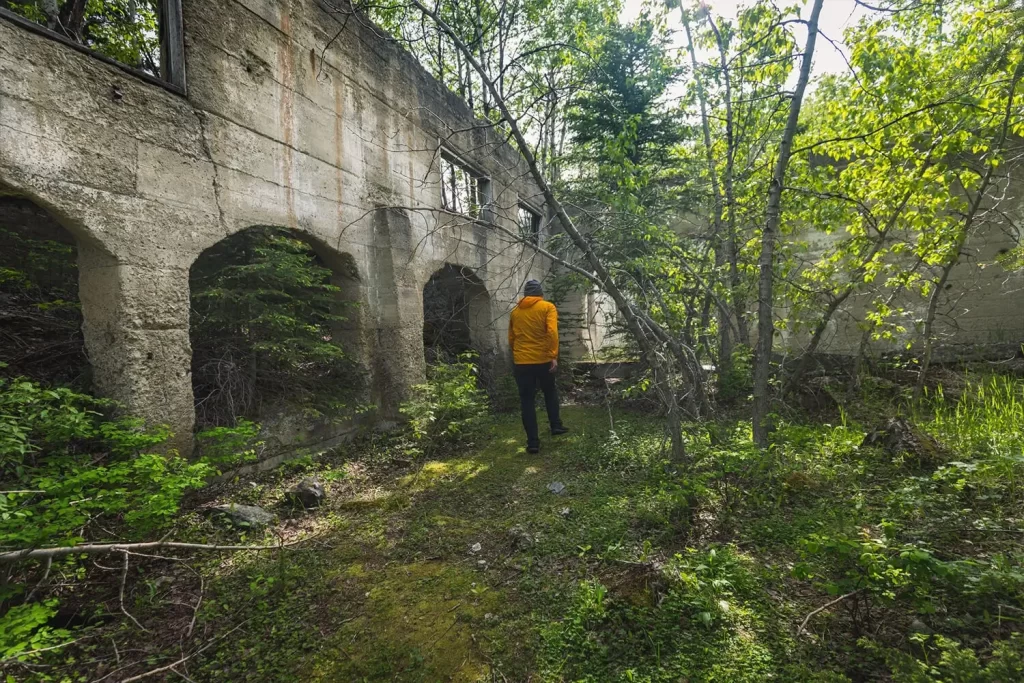
Walking through the ruins.

After exiting out the other side of the ruins, turning sharply right. The trail is barely visible at first, but becomes clear once past the corner of the building.
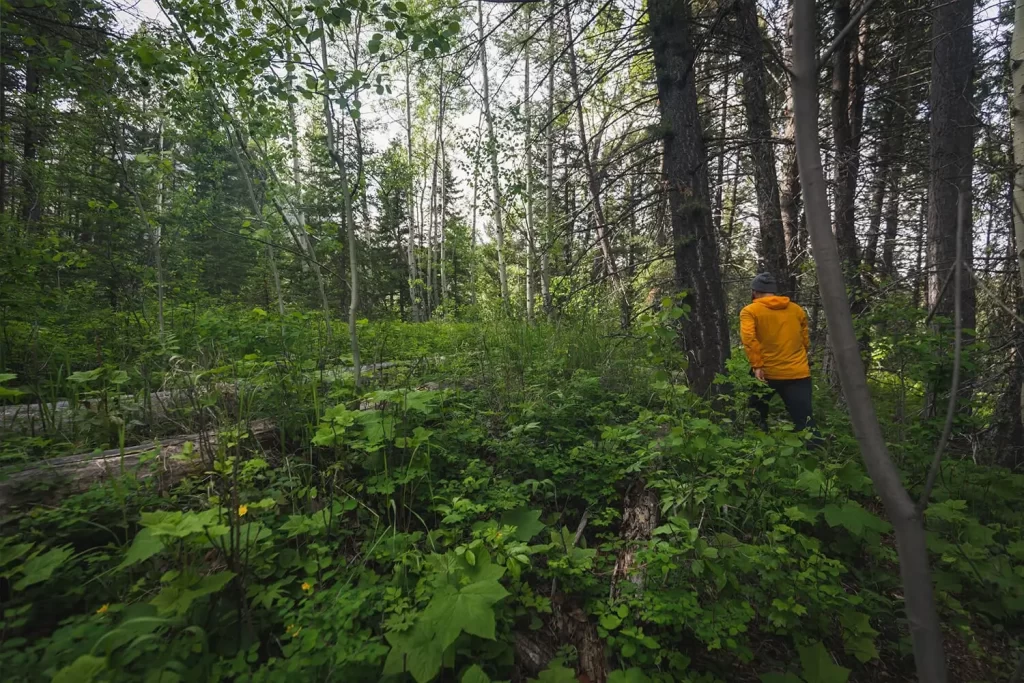
Following the trail leading away from the mine ruins.
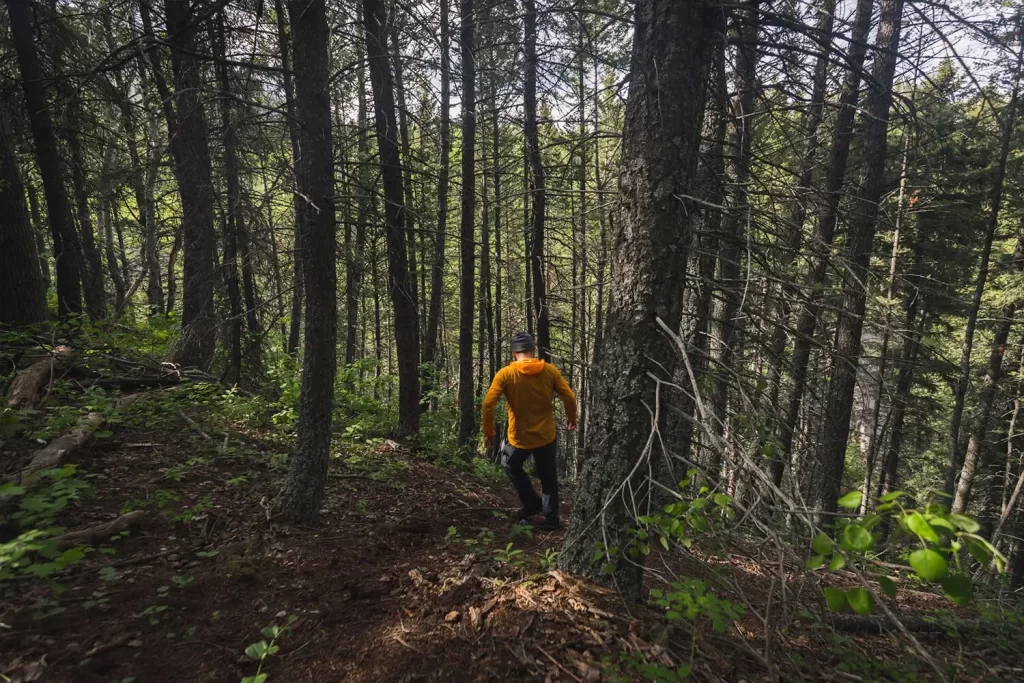
Steeply switchbacking down the gully. This section is very steep and has turned multiple people away. Caution is required. I wouldn’t dare attempt it when wet, nor would I try it without proper hiking footwear and hiking poles preferably.

The last switchback ending at the base of the gully. From here, turn right down a faint social trail through some bushes to reach Lower Drum Creek Falls a few meters downstream. Follow closely upstream to reach the upper falls.
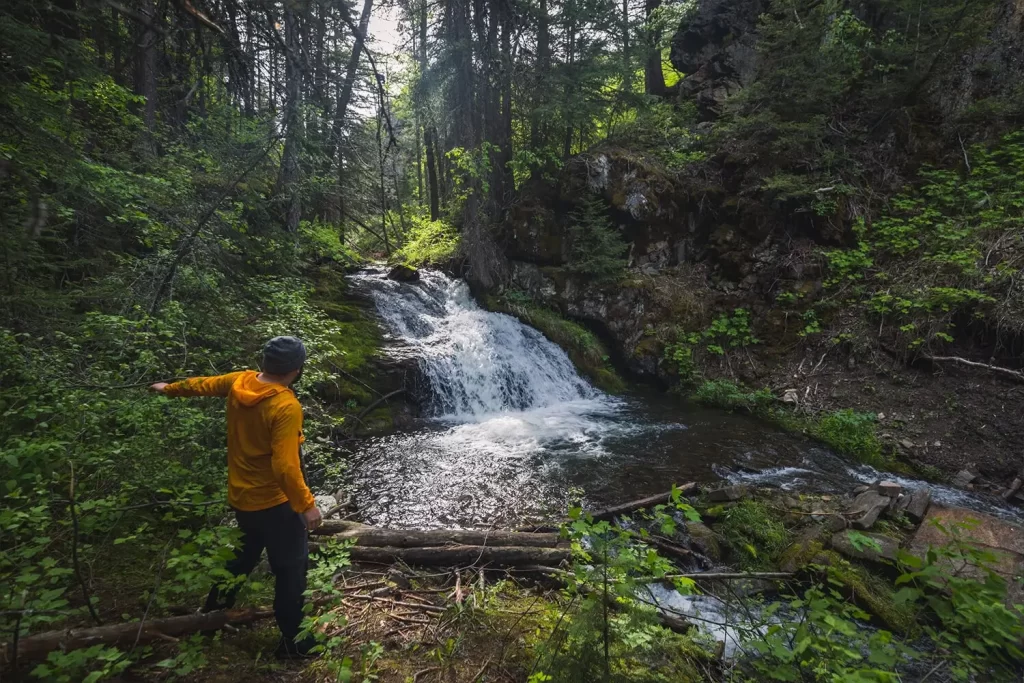
Lower Drum Creek Falls seen after crashing through the foliage along a faint social trail.
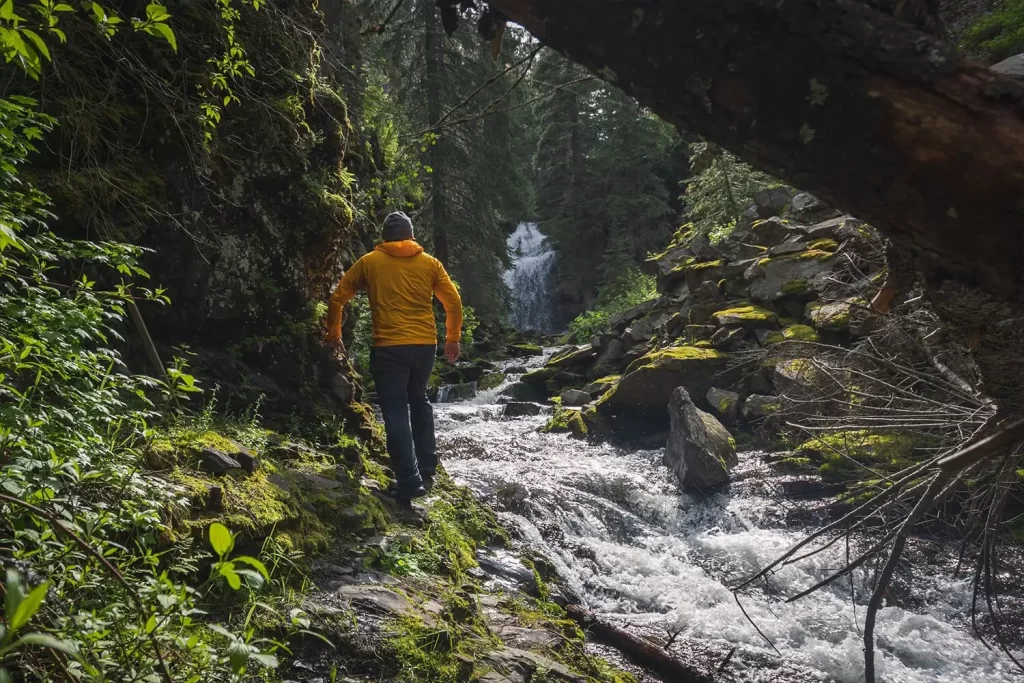
Following the creek upstream to the upper falls, visible in the distance. Please follow the social trail and try to avoid disturbing the moss.
Recommended Hiking Gear



Water is a must whenever I’m hiking, especially if the sun is going to be out. My favourite water filter I’ve used is the Katadyn BeFree 0.6L, which unlike other water filters I’ve used packs up really small and lightweight. For hikes where I know there won’t be any readily available water sources along the way, I make sure to bring my own. The Hydrapak Stow 1L bottle is my go-to, for the same reason that it’s made of a soft plastic that folds up and doesn’t take up any more extra space than necessary in my pack. Finally, Aquatabs are another great option for purifying water, with one tablet being suitable for one litre of water. I previously used the Grayl water filter while travelling internationally, and though I found its hard body more convenient for day to day use and easier to drink from, it has a little too much bulk for my fast-and-light style of hiking.



The secret to all my photos of gorgeous sunset and sunrise mountaintop views? A lot of hiking in the dark. And let me speak from personal experience when I say that the last thing that you want to happen when hiking is to be caught in the dark without a headlamp. I used the Black Diamond Spot 400 for years and it worked great – until I lost it on top of a mountain somewhere. The only downside to it was having to worry about the batteries dying, though there’s also a slightly more expensive version that has a rechargeable battery. Nowadays I’m using the Petzl Actik Core, which is a bit pricier than the more budget-friendly Black Diamond, but is also brighter, more comfortable (in my opinion), and has a hybrid power system that is rechargeable but can also take AAA batteries if needed.
You won’t see me using trekking poles on shorter hikes often – but on long hikes and backpacking trips, as well as certain scrambles, they are an absolute lifesaver. I’ve invested in a high quality ultra-lightweight pair of MSR DynaLock Ascent carbon poles which, while pricey, I don’t regret one bit. If you’re not entirely sure how much use you’re going to get out of a pair of trekking poles, the best budget-friendly option would be the Trekology Trek Z 2.0. Amazon does sell a lot of cheaper Made in China-style trekking poles for cheaper, but these usually are much much heavier and not worth buying.
All the best and most long-lasting cables and power banks I’ve ever owned have been Anker. I once had a phone cable from them that lasted me over three years of daily use! That’s why I keep an Anker PowerCore Essential 20K power bank on me. Like many people I use my phone for a lot of stuff when hiking (checking in with family, using online maps, taking photos, flying my drone) so I like to be prepared for that low battery warning by having a backup power source on me just in case.



The only socks I ever buy for myself are from Darn Tough, and I almost always make sure to wear them when hiking. After years of having no problems only wearing these comfortable and rugged socks for hikes, I accidentally wore a pair of no-name socks on a hike last year and ended up with blisters on both feet. Safe to say I’m back to sticking with the Darn Tough. And the best part? They have a lifetime guarantee, meaning that if they ever wear out you can send them back for a brand new pair. For hiking footwear I go between a pair of lightweight approach shoes for quick and dirty mountain ascents or anything involving scrambling and more heavy-duty boots for longer treks. I’ve worn a couple different versions of the lightweight but super durable Arc’teryx Konseal FL 2 approach shoes for a few years now and am very impressed with the durability. I also really like the thick toecap that keeps me protected every time I stumble into a root or large rock. For longer, tougher, or muddier treks I rely on my LOWA Camino EVO GTX, which I find insanely comfortable and made of very high quality.



I wear my Ar’teryx Gamma Lightweight Pants on every single hike I go on, and on many days when I’m not hiking. After several years of abuse they are still holding together extraordinarily well, with only a few small holes from where I’ve fallen down and some slight stains from being repeatedly coated with mud. They’re lightweight, breathable, and super comfortable. For lightweight and breathable hiking tops I’m a big fan of both the Patagonia Capilene Shirt and the MEC Core Shirt. My Arc’teryx Squamish Hoody shows up in a lot of my photos. It’s super lightweight and packable, and does a great job of cutting the wind while also being pretty breathable. I also have an Arc’teryx Atom Hoody and Arc’teryx Beta LT that I pull out for cooler or wetter conditions.
I hope you enjoyed this guide to hiking to Drum Creek Falls in the Crowsnest Pass! Feel free to leave any questions in the comment section below or to contact me directly via social media.

1 thought on “Drum Creek Falls”